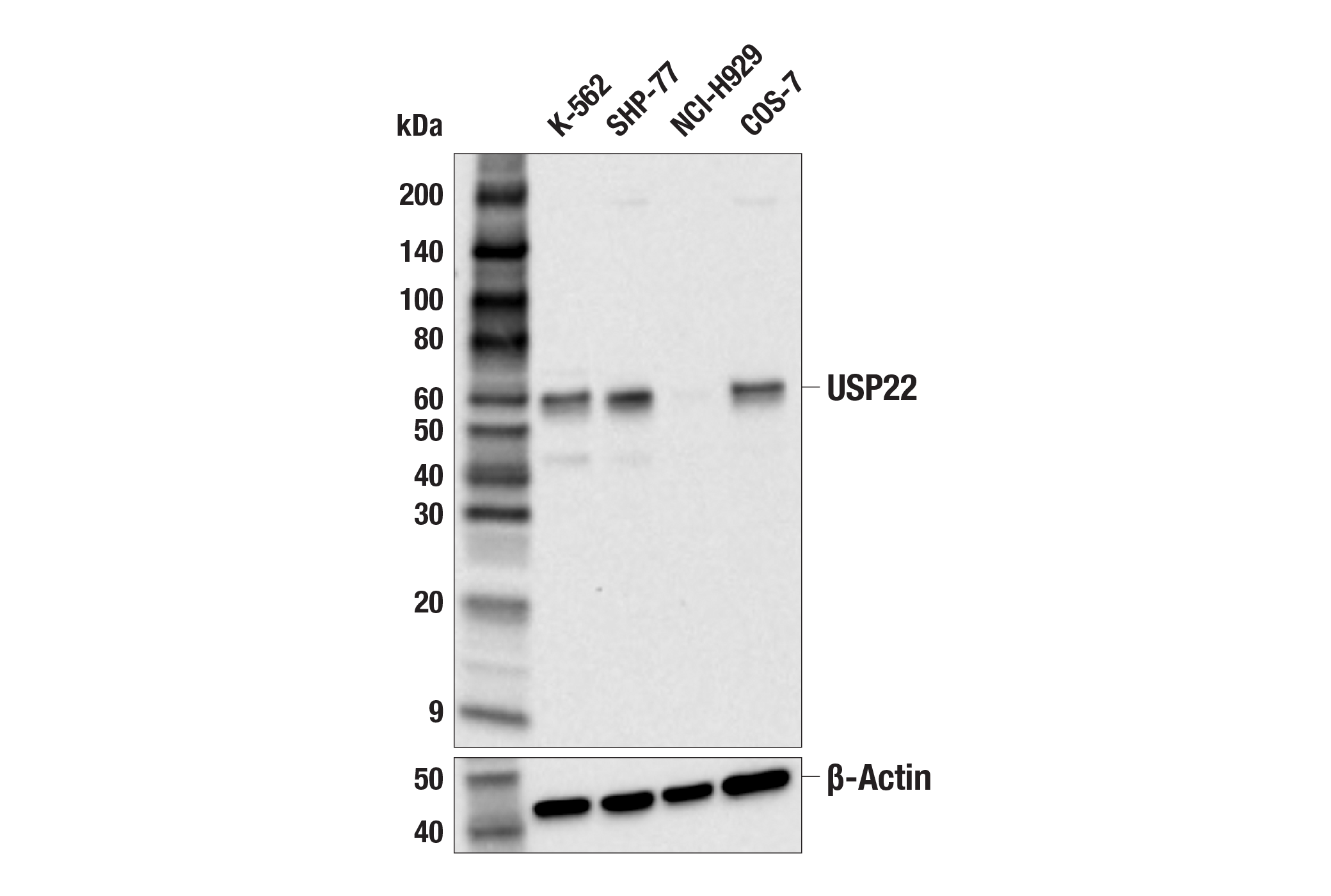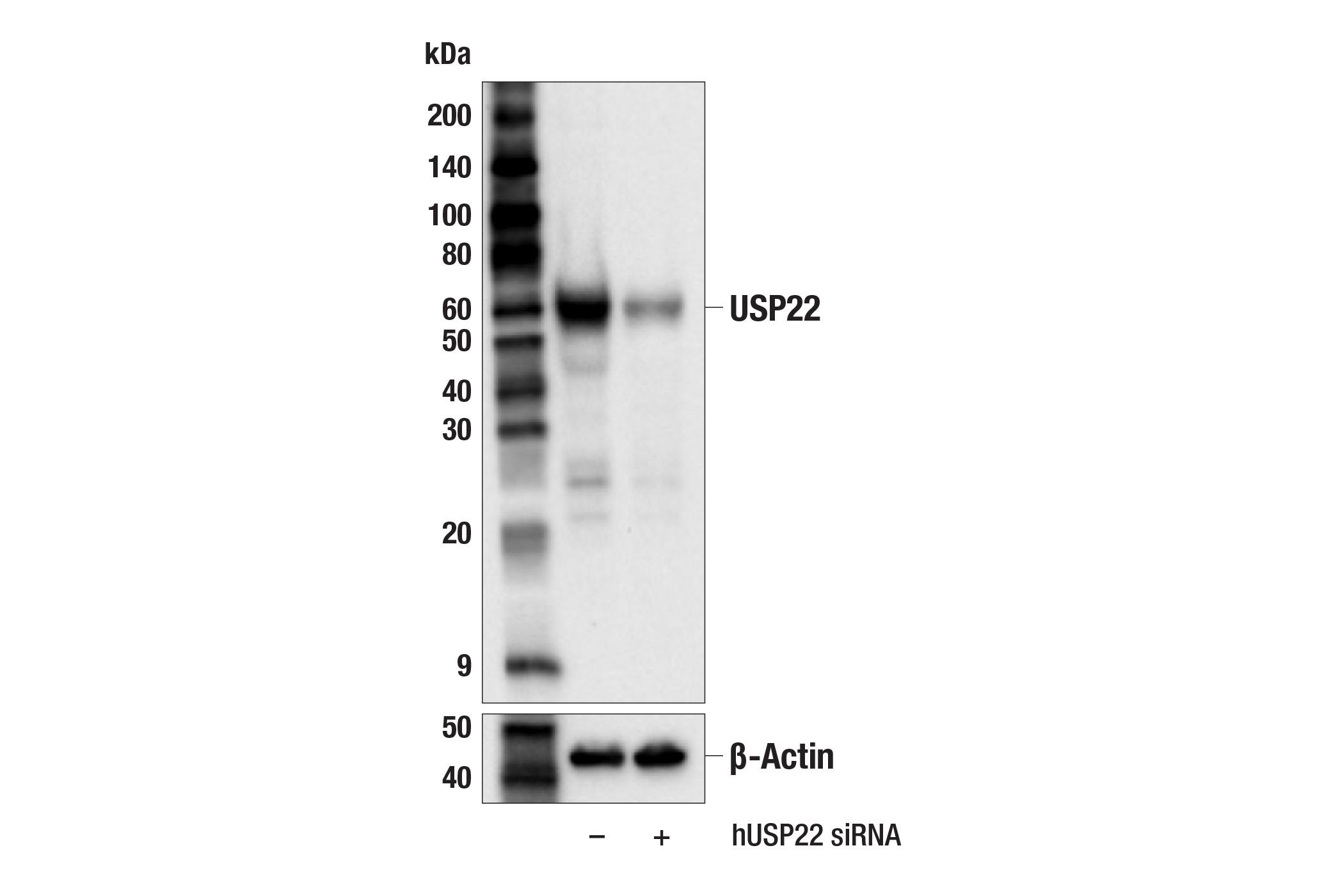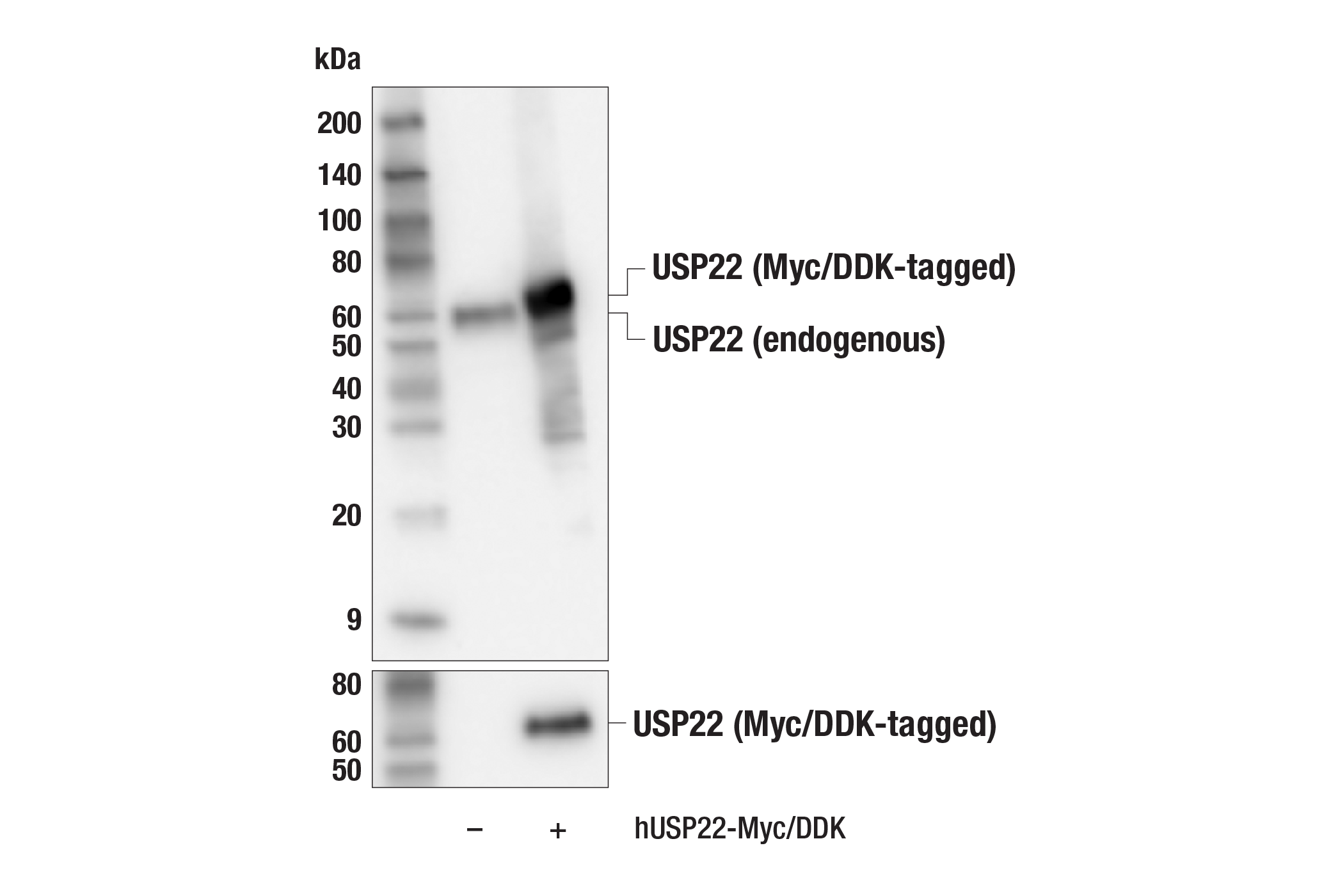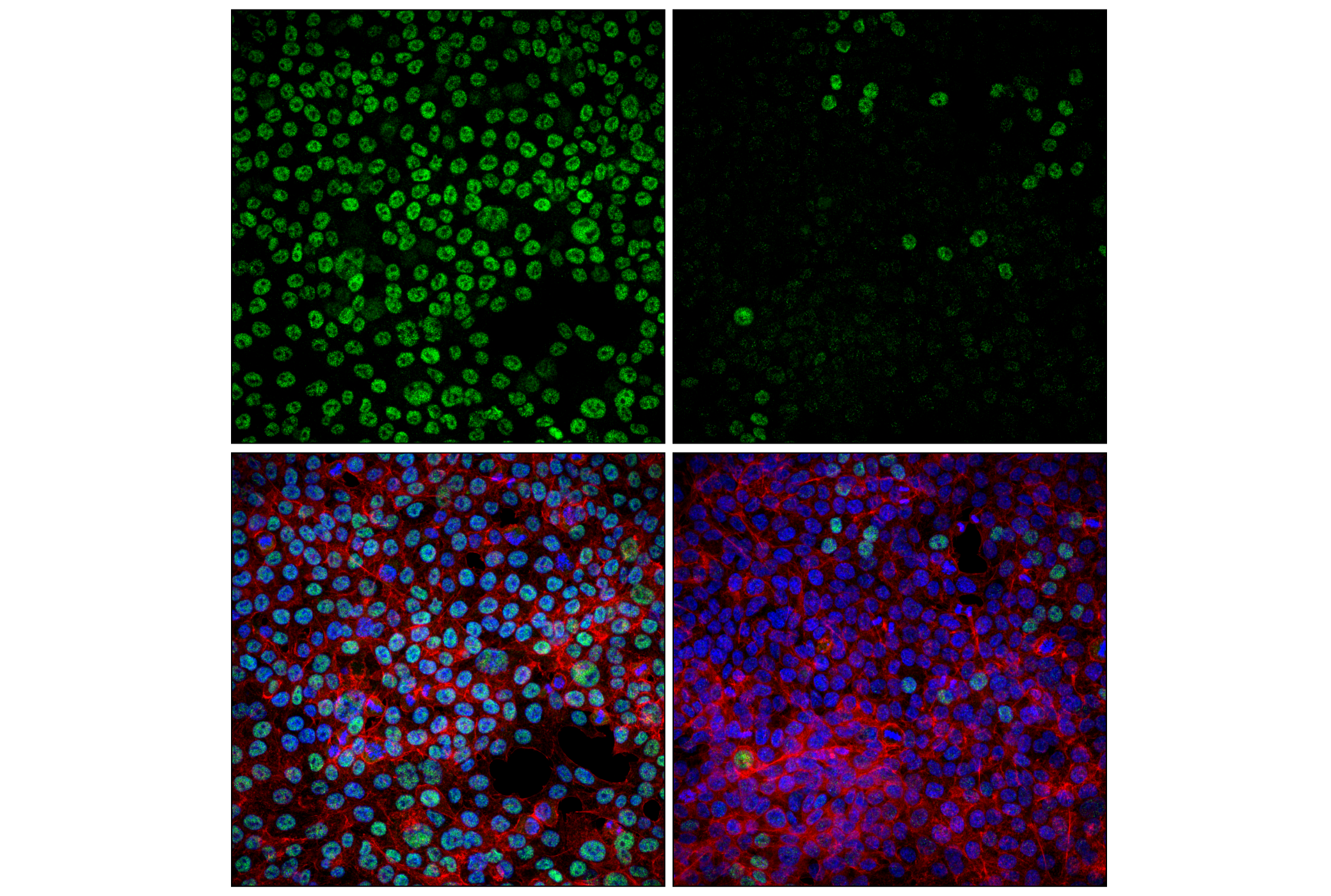WB, IF-IC
H Mk
Endogenous
60
Rabbit IgG
#Q9UPT9
23326
Product Information
Product Usage Information
| Application | Dilution |
|---|---|
| Western Blotting | 1:1000 |
| Immunofluorescence (Immunocytochemistry) | 1:100 - 1:200 |
Storage
Specificity / Sensitivity
Species Reactivity:
Human, Monkey
Source / Purification
Monoclonal antibody is produced by immunizing animals with a synthetic peptide corresponding to residues surrounding Leu457 of human USP22 protein.
Background
Ubiquitin-specific-processing protease 22 (USP22) is a deubiquitinating enzyme that, along with TXN7, ATXN7L3, and ENY2, forms the deubiquitination module of the human SAGA complex (1,2). SAGA is capable of deubiquitinating H2A and H2B in opposition to polycomb activity (3,4). In addition to histone targets, USP22 deubiquitinates and stabilizes SirT1, which in turn deacetylates and suppresses p53 to repress apoptosis (5). Regulation of SirT1 by USP22 has also been shown to affect STAT signaling (6). USP22 plays a role in double-stranded break repair and antibody class switching (7,8). USP22 has also been shown to occupy the SOX2 promoter, blocking transcription and thus regulating pluripotency (9). Many cancers have elevated levels of USP22, which can promote cancer progression and metastasis (10-12).
- Zhao, Y. et al. (2008) Mol Cell 29, 92-101.
- Zhang, X.Y. et al. (2008) Mol Cell 29, 102-11.
- Zhang, X.Y. et al. (2008) Cell Cycle 7, 1522-4.
- Lang, G. et al. (2011) Mol Cell Biol 31, 3734-44.
- Lin, Z. et al. (2012) Mol Cell 46, 484-94.
- Ao, N. et al. (2014) Cell Physiol Biochem 33, 1863-75.
- Ramachandran, S. et al. (2016) Cell Rep 15, 1554-1565.
- Li, C. et al. (2018) Nat Commun 9, 1006.
- Sussman, R.T. et al. (2013) J Biol Chem 288, 24234-46.
- Liu, Y.L. et al. (2010) J Gastroenterol Hepatol 25, 1800-5.
- Liu, Y.L. et al. (2011) J Surg Oncol 103, 283-9.
- Zhang, Y. et al. (2011) J Cancer Res Clin Oncol 137, 1245-53.
Species Reactivity
Species reactivity is determined by testing in at least one approved application (e.g., western blot).
Western Blot Buffer
IMPORTANT: For western blots, incubate membrane with diluted primary antibody in 5% w/v BSA, 1X TBS, 0.1% Tween® 20 at 4°C with gentle shaking, overnight.
Applications Key
WB: Western Blotting IF-IC: Immunofluorescence (Immunocytochemistry)
Cross-Reactivity Key
H: human M: mouse R: rat Hm: hamster Mk: monkey Vir: virus Mi: mink C: chicken Dm: D. melanogaster X: Xenopus Z: zebrafish B: bovine Dg: dog Pg: pig Sc: S. cerevisiae Ce: C. elegans Hr: horse GP: Guinea Pig Rab: rabbit All: all species expected
Trademarks and Patents
Limited Uses
Except as otherwise expressly agreed in a writing signed by a legally authorized representative of CST, the following terms apply to Products provided by CST, its affiliates or its distributors. Any Customer's terms and conditions that are in addition to, or different from, those contained herein, unless separately accepted in writing by a legally authorized representative of CST, are rejected and are of no force or effect.
Products are labeled with For Research Use Only or a similar labeling statement and have not been approved, cleared, or licensed by the FDA or other regulatory foreign or domestic entity, for any purpose. Customer shall not use any Product for any diagnostic or therapeutic purpose, or otherwise in any manner that conflicts with its labeling statement. Products sold or licensed by CST are provided for Customer as the end-user and solely for research and development uses. Any use of Product for diagnostic, prophylactic or therapeutic purposes, or any purchase of Product for resale (alone or as a component) or other commercial purpose, requires a separate license from CST. Customer shall (a) not sell, license, loan, donate or otherwise transfer or make available any Product to any third party, whether alone or in combination with other materials, or use the Products to manufacture any commercial products, (b) not copy, modify, reverse engineer, decompile, disassemble or otherwise attempt to discover the underlying structure or technology of the Products, or use the Products for the purpose of developing any products or services that would compete with CST products or services, (c) not alter or remove from the Products any trademarks, trade names, logos, patent or copyright notices or markings, (d) use the Products solely in accordance with CST Product Terms of Sale and any applicable documentation, and (e) comply with any license, terms of service or similar agreement with respect to any third party products or services used by Customer in connection with the Products.



